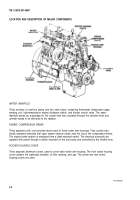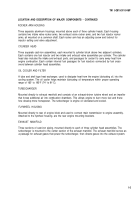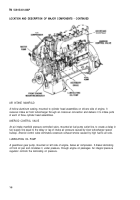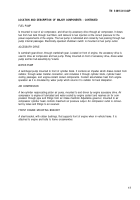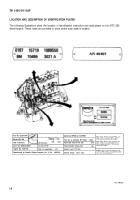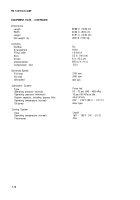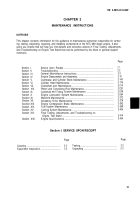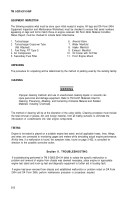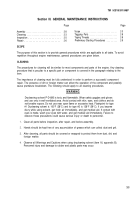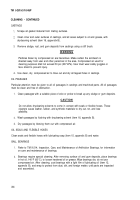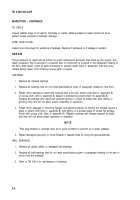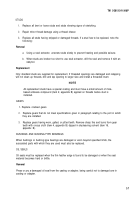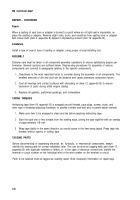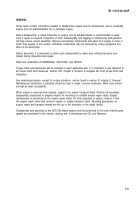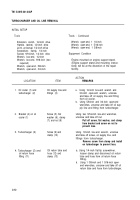TM-5-2815-241-34-P - Page 26 of 738
TM 5-2815-241-34&P
CLEANING - CONTINUED
CASTINGS
1.
Scrape all gasket material from mating surfaces.
2.
Clean inner and outer surfaces of castings, and all areas subject to oil and grease, with
drycleaning solvent (item 16, appendix B).
3.
Remove sludge, rust, and gum deposits from castings using a stiff brush.
WARNING
Particles blown by compressed air are hazardous. Make certain the airstream is
directed away from user and other personnel in the area. Compressed air used for
cleaning purposes shall not exceed 30 psi (207 kPa). User must wear safety goggles or
face shield to prevent injury.
4.
Use clean, dry, compressed air to blow out and dry all tapped holes in castings.
OIL PASSAGES
Particular attention must be given to all oil passages in castings and machined parts. All oil passages
must be clean and free of obstruction.
1.
Clean passages with a suitable piece of wire or probe to break up any sludge or gum deposits.
CAUTION
Do not allow drycleaning solvents to come in contact with seals or flexible hoses. These
cleaners cause leather, rubber, and synthetic materials to dry out, rot, and lose
pliability.
2.
Wash passages by flushing with drycleaning solvent (item 16, appendix B).
3.
Dry passages by blowing them out with compressed air.
OIL SEALS AND FLEXIBLE HOSES
Clean seals and flexible hoses with lubricating soap (item 15, appendix B) and water.
BALL BEARINGS
1.
Refer to TM 9-214, Inspection, Care, and Maintenance of Antifriction Bearings, for information
on care and maintenance of bearings.
2.
Bearings require special cleaning. After removing surface oil and gum deposits, place bearings
in hot oil, 140°F (60°C), to loosen hardened oil or grease. Wipe bearings dry; do not use
compressed air. After cleaning, coat bearings with a light film of lubricating oil (item 12,
appendix B), and wrap to protect from dust, dirt, and foreign matter, until parts are inspected
and assembled.
2-4
Back to Top

